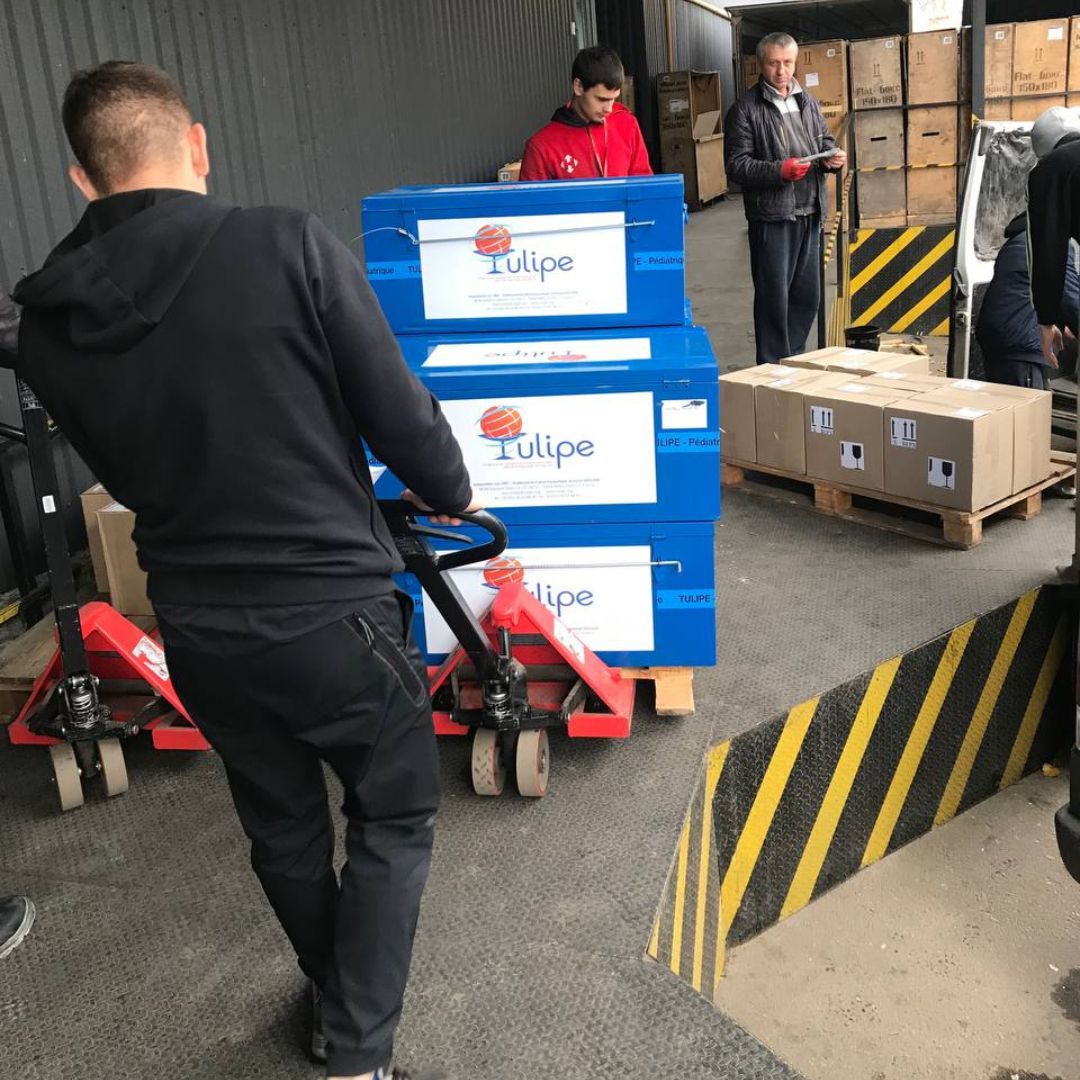[Interview] Éric Zipper and his team from the World Rescue Corps (WRC) NGO USAR (Urban Search and Rescue) are taking off for Turkey on Tuesday 7 February at 7.20am from Paris-Charles de Gaulle airport in a Tulipe emergency trunk. They will arrive a few hours later in Istanbul before being transported as close as possible to the epicentre in the south-east of the country. Their mission: to assess the situation following the earthquake in Turkey and Syria, and to take part in local search and rescue missions. We spoke to Eric Zipper, Chairman of the CMS USAR, shortly before his departure. This urban search and rescue specialist, who is also a caver, was involved in the Haiti earthquake in 2010, which killed 250,000 people, and more recently in the war in Ukraine.
Éric Zipper, second from right, leaving Roissy CDG airport this morning (photo CMS USAR)
How did you find out about the earthquake?
As with all missions of this type, we have a monitoring unit. This morning, when we received the news of the earthquake in Turkey, we immediately realised that it was a very serious earthquake. We therefore decided to launch an assessment mission, starting less than 24 hours after the earthquake.
How did you prepare?
February 6 was devoted to preparing our assessment mission and putting together an assessment team: myself as head of mission, an emergency doctor, an emergency nurse, a dog team (a handler with two dogs) and a logistician. At the same time, we’ve been working hard to find contacts in Turkey quickly so that we don’t lose any time when we arrive tomorrow (editor’s note: today) and are transported as close as possible to the epicentre. We are in contact with the head of one of Turkey’s biggest construction companies. He made himself available to us from the outset to facilitate transport options as far as possible. Then, as we are leaving with an emergency doctor and nurse, the Tulipe association provided us with an initial emergency trunk. We are also going, even if the departure team is small, to search for buried people. This medical equipment will enable us to treat them once they are out of the rubble.
What will happen once we’re there?
A contact person will be waiting for us at Istanbul airport and we’ll get as close as possible to the disaster zone by taking a domestic or private flight. Once we’ve arrived in the earthquake zone, the first thing we’ll do is get in touch with the Turkish authorities and rescue teams so that we can lend them a hand. They have a great deal of expertise, because unfortunately Turkey is a country that has been badly hit by earthquakes. The second phase of the mission will take place on Wednesday evening or Thursday morning with the departure of around ten additional rescue workers. They will be taking with them clearance equipment and additional Tulipe trunks. I’m going to prepare the most suitable and efficient drop-off point for them. We have two local fixers, which will speed things up in terms of finding information, contacts and organisation.
Compared with your previous assignments, how do you feel about this one?
I’m rather pessimistic because there was a combination of unfavourable factors that considerably reduced the chances of survival: the early hour of the earthquake in Turkey, with many people at home when it struck, its violence, its proximity to the surface, with an epicentre just 10 kilometres below a densely populated area. The second tremor was stronger than the first, which is also quite rare. Since then, there have been numerous aftershocks of sufficient intensity to shear off the ends of foundations. Another unfavourable factor was the cold, with sub-zero temperatures and snow. The provisional death toll announced for the moment (editor’s note: more than 4,300 dead on 7 February at 6.56am) is well below reality… It reminds me of Haiti, where 6 deaths were announced 3 hours after the earthquake, then a few hundred at the end of the first day and finally 250,000 dead.
French rescue workers take their first Tulipe trunk with them (DR Eric Zipper)
Faced with the possibility of aftershocks and the risky situation on the ground, how are you organising yourself?
We have to manage the team’s safety in the face of a risk that is totally random and impossible to anticipate. When we’re in rubble, it’s very difficult to detect an aftershock. The scree is not necessarily in contact with the ground. We are also completely focused on the search. The only safety feature once you’ve entered the rubble is the bell system outside with a glass of water. When the person in charge of monitoring the water surface notices the slightest tremor, he whistles so that we can get out of the rubble quickly. Our commitment is measured by the chances of survival of the victims of the disaster. If we’re sure that someone is alive and that by going into the rubble it’s possible to get them out, we go in without question. If we haven’t had any answers for a while and there’s a high risk of an aftershock, we don’t go in. The risk is assessed on a case-by-case basis, once we’re there. It depends on what the dogs are going to mark and on the testimonies on the spot.








